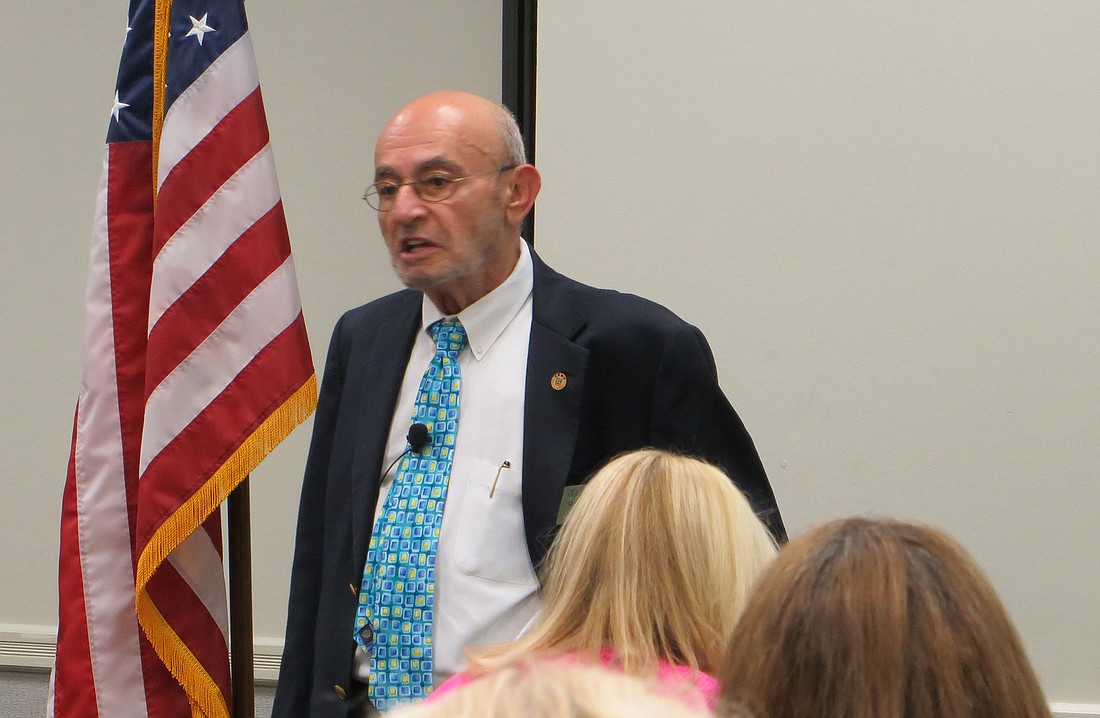
By Carrie Resch
Contributing Writer
For real estate agents, preparation is fundamental to success. That was the message delivered by instructor Charles Bonamer at a “Critical Thinking for Real Estate Agents” class at Northeast Florida Association of Realtors.
“The most important thing we can do is preparing for any event in advance,” said Bonamer. Critical thinking plays a crucial role in how agents analyze and assess every situation and adjust accordingly, he stressed.
This may include having a plan of action for negotiations or dealing with an upset customer, as well as learning to decipher non-verbal cues such as body language.
Thinking critically also means factoring in generational differences and individual personality traits when deciding how to approach a customer.
The first step is deciding what you want to achieve, Bonamer said. Understand your priority, prepare in advance of meeting the customer and do your research.
Agents must determine with whom they are communicating. Rather than a single marketing strategy expected to reach everyone, advertising should be geared toward the tendencies of specific generations.
Understand the generational traits of each group, including the era in which each grew up, what they’ve experienced and their common traits.
For example, generational dynamics expert John Ansbach says the key to connecting with Generation X and millennial clients is to see them as different, special and unique. Conversely, one out of three of both the Silent Generation (those born in the 1920s through the mid 1940s) and baby boomers own vacation property, according to Bonamer.
The Silent Generation, comprising those who survived the Great Depression and World War II, can be reminded that they’ve earned it. Let baby boomers know that they play a key role in society, Ansbach advises.
Additionally, most people, regardless of generational influences, can be split into two categories: high-context and low-context.
High-context cultures include those of Asian and Spanish descent. They want to know if you share the same values, their decisions tend to be based more on feelings than numbers, they stand closer to each other, family is important and touching is OK, Bonamer said.
Low-context cultures include Australian and German influences. They are more business-minded and want to talk about numbers right away, so be prepared with data and research, Bonamer advised.
Of the two groups, high-context customers are more likely to walk away from a deal than are their counterparts. With that in mind, Bonamer suggests obtaining a higher deposit — more than they can afford to lose — when dealing with high-context buyers.
Learn how to read body language. Malcolm Gladwell, author of “Blink: The Power of Thinking Without Thinking,” emphasizes the importance of non-verbal cues.
For example, someone trying to hide something will avoid eye contact, someone who is bored may gaze past you or glance around the room, and someone who is angry may maintain piercing eye contact.
If a person leans towards you, they may be interested or are in agreement. Alternatively, someone who turns their body away from you may be bored or disagree.
Non-verbal cues also can include gestures, which are not universal and vary based on the culture, Bonamer said. He recommends the book “Kiss, Bow, Or Shake Hands” by Terri Morrison as a guide. It contains information about cultural variances of more than 60 countries.
To observe body language of a customer not physically present for a meeting, Bonamer suggests asking them to use Skype or FaceTime in order to gauge their non-verbal reactions.
“Most of what you’re going to learn from a customer is not by what they said, but it’s actually by their facial expressions,” said Nicole Williams-Lewis, a Realtor with Legacy Realty Group, who attended the class. “It’s absolutely critical to know those things and to read that in this business.”
Soliciting input from customers is critical to assessing the effectiveness of these strategies.
Ask the customer in advance if they’d be willing to answer a survey to help ensure a better response rate. Devise 10 questions for sellers and 10 for buyers. Also, ask for their advice, not their opinion, prompting customers to perceive that they are part of the process, Bonamer said.
Measure their satisfaction on a scale of 1-10. Once the answers are tabulated, you’ll know how to adjust your approach to both buyers and sellers. Online tools, such as SurveyMonkey, are available to provide a questionnaire to customers.
Preparation also means having a plan in place to deal with unhappy clients. The sooner you can deal with a dissatisfied person, the more likely you are to resolve the conflict, Bonamer advised. Set up a time to meet that is convenient for the customer.
Defuse the anxiety level by asking how you can help and promise to fix the issue if it is within your power. This type of conflict resolution will better allow you to maintain the relationship, he said.
“If we lose the trust of our customer, you will never regain it,” Bonamer said.
That trust is critical, said Elizabeth Berg, a Realtor with Florida Homes Realty & Mortgage, who attended the session. She noted that although agents represent their brokerages, in a highly personal business, they’re also representing themselves.
“I think that the good benefits of having a course like this is it helps remind us about human nature and that we are in the business of people,” Berg said, stressing the importance of “not only reading and understanding somebody else’s body language so that we can communicate better with them, but also making sure that they get a better understanding of ourselves.”